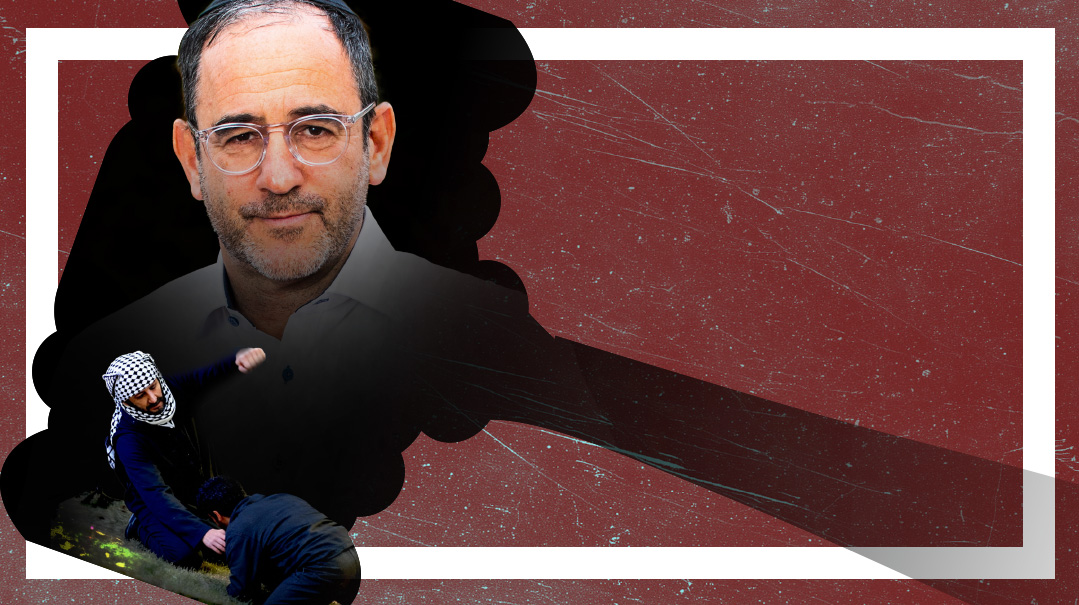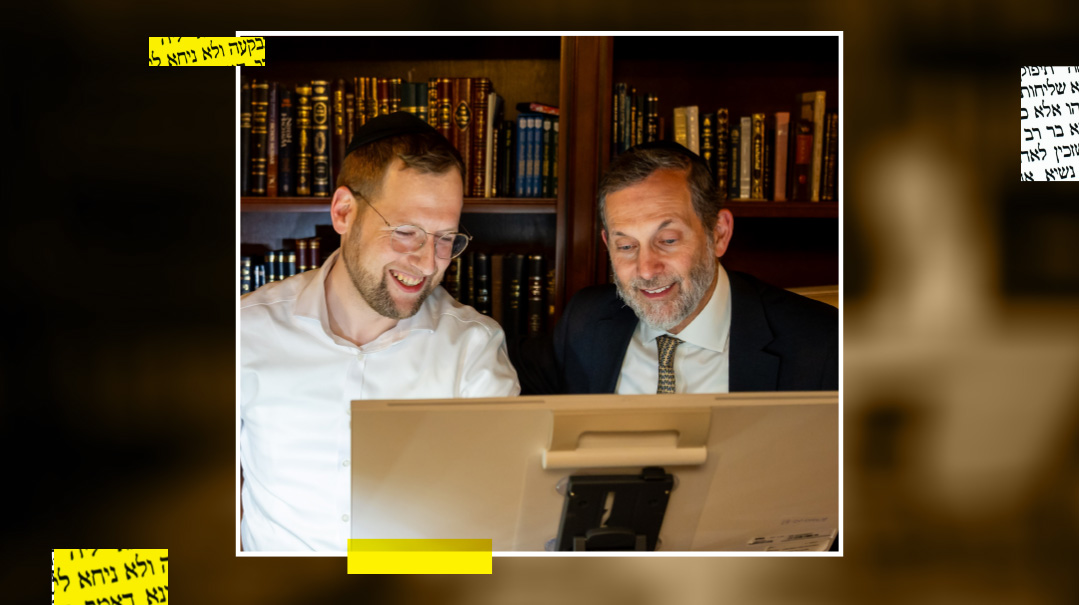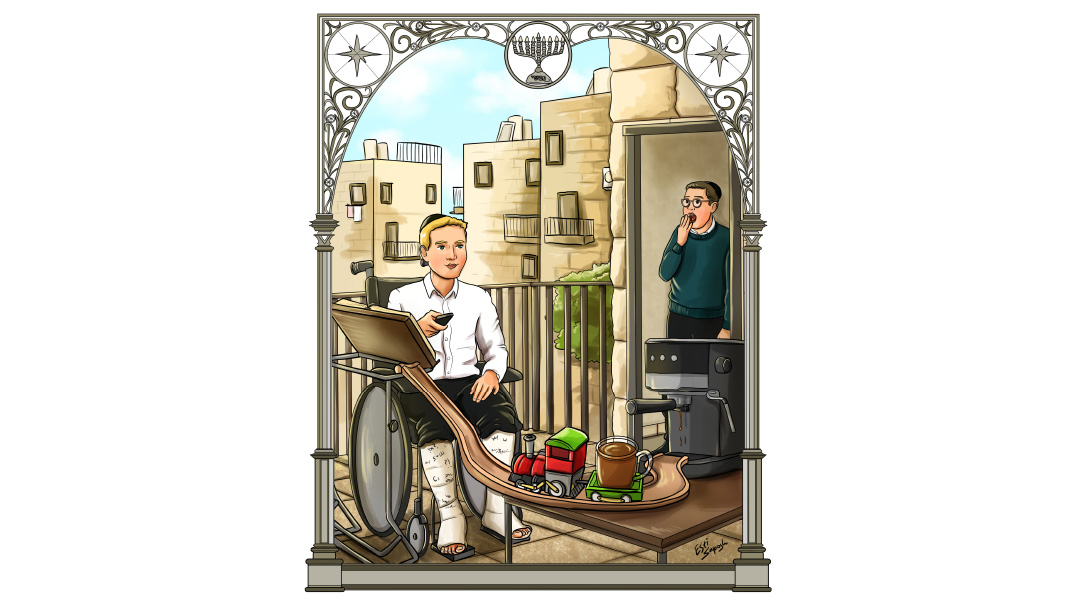The Tefillin Wars of Tel Aviv

A battle of ideals and identity
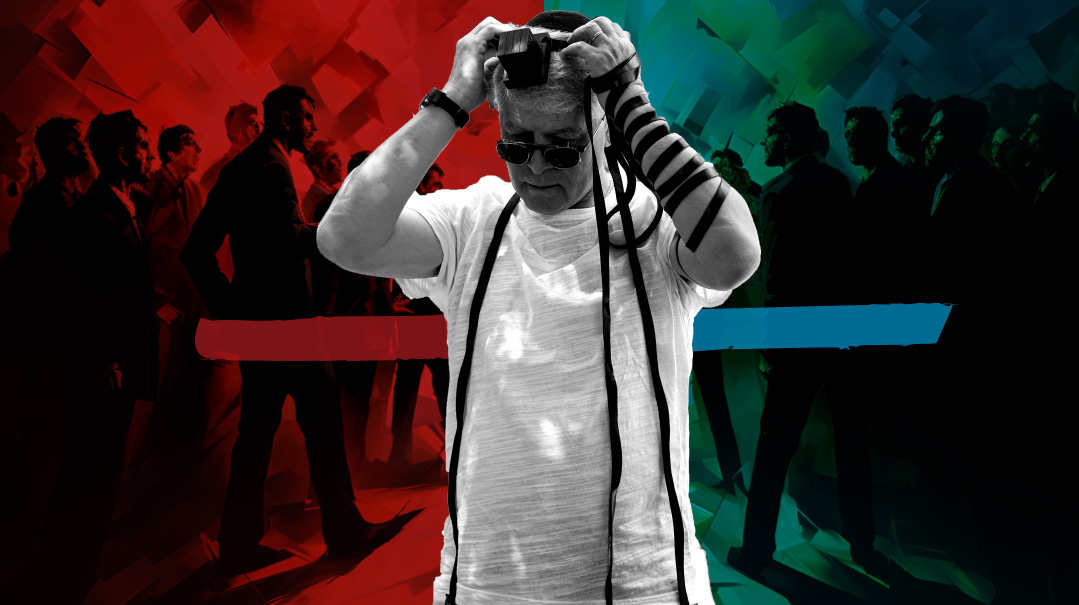
Photos: Elchanan Kotler, Flash 90
IN Israel’s liberal capital, an illiberal wind is blowing as avowed secularists furiously turn on Tefillin and public displays of Jewish practice as missionary activity. From the Shuk to Dizengoff and Habima Square, weeks of conversations with Tel Avivians of all stripes lead to one conclusion: the battle over the Tefillin stands is a microcosm of the battle for Jewish identity today
It was a Friday afternoon in early June, and in the shadow of the famous theater that gives Tel Aviv’s Habima Square its name, a mild-mannered Chabad bochur manning a pop-up booth offered the largely secular passersby his wares — the chance to put on tefillin.
For Philadelphia-born Shlomo Gerber, this was a regular Erev Shabbos activity, carried out after Friday morning seder in the nearby Chabad yeshivah in the city center. But after months of fevered left-wing protests against the Netanyahu government’s signature justice reforms, the simple routine had put him on someone’s radar.
While two secular teens came over to Gerber’s stand and began to put on tefillin, a woman marched up, camera in hand and contempt in her voice.
“You know that this is forbidden by law?” she barked at the shaliach, waving aside his friendly offer of Shabbos candles, and turning to the boys.
“How old are you?” she demanded of one teen. “I’m fourteen,” he answered politely, adding, “we approached him on our own.”
But the faceless antagonist — holding the camera away so that only her voice was picked up — grew more aggressive.
“Did he promise you anything to get you to do that — candies, or something?” she demanded. “You know that this is forbidden by law, because you’re a minor.”
“They want to do a mitzvah like all Jews want to do a mitzvah,” the shaliach attempted to break in, winding away the tefillin and keeping his cool.
“Be quiet! I wasn’t talking to you,” the woman snapped before concluding with a final warning. “It’s forbidden by law to use religious coercion on any of these children. Never approach another child again — you’ll end up in prison!”
It was bigotry at its ugliest — all the more chilling for being inflicted by one Jew on another in the heart of one of the biggest Jewish cities in the world. Predictably, the video of the incident proved a social media sensation, although much of it not of the kind that the left-wing activist had hoped. Within hours, it had triggered an outpouring of condemnation as celebrities and news site commenters weighed in, in defense of the Chabadnik.
“What’s your problem? It’s just tefillin,” posted one influencer.
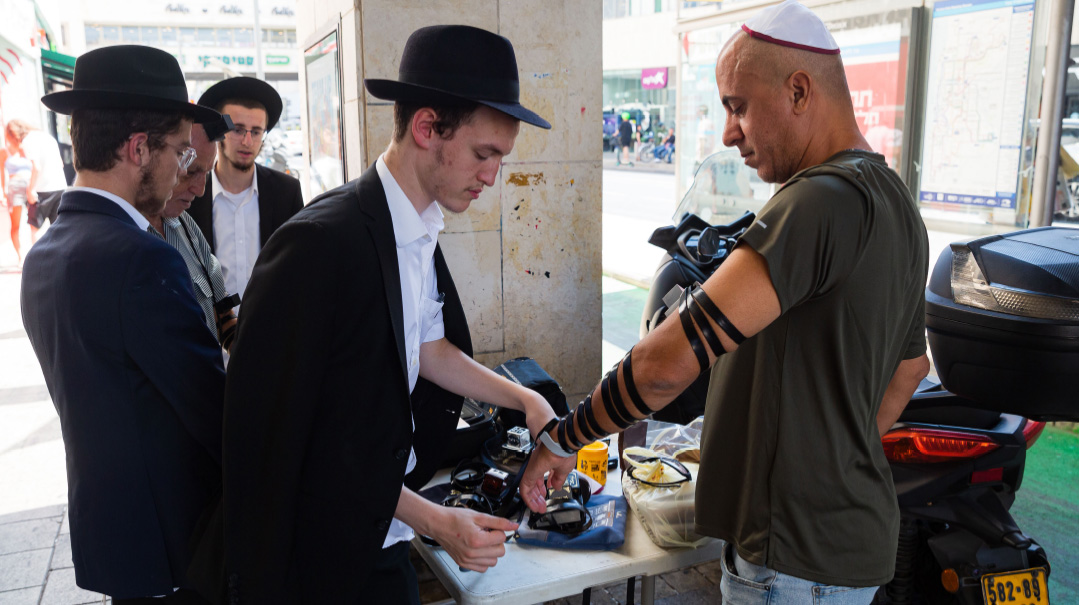
“It’s shocking,” wrote a famous comedian. “I’m not religious, but Chabad are Israel’s real Foreign Ministry, and they’re always there for you when you go overseas.”
A talkback on a right-wing news site was more cutting: “The lefties are okay with children changing their biological identity at age nine, but 14-year-olds can’t choose to put on tefillin.”
Like a host of previous incidents involving hostility to religious life, the controversy peaked with a flood of secular teens at tefillin stands in Tel Aviv and beyond, before the news cycle moved on.
In one sense, the incident was just another social media outrage fest in the long trail of provocations and religious bating that has defined Israel’s worse societal clash in memory. There’s a certain predictable formula to the encounters that have been about children reduced to tears by anti-reform protesters, a chareidi man berated for not serving in the army, or a religious beggar faulted for his indigence because of his supposed refusal to earn a living. First comes the viral outrage, then support or condemnation from public figures on the relevant side, followed by some media airtime, and then the circus moves on.
But to many observers, the Habima incident went beyond the left-right sniping that has dogged public discourse over the last year. Deep into the country’s Indian summer of political discontent, its hard to find anyone who believes that the turmoil is about the finer points of parliamentary democracy and the separation of powers. Rather, it’s clear that at heart the struggle over justice reform is an almighty tussle over Israel’s identity — hence its vitriol.
Religious or secular, conservative or liberal, particularistic or universalist, democratic first or Jewish first — the most convulsive debate in generations about Israel’s future is now being hashed out in the media, the Knesset, and the streets.
Amid that Kulturkampf, the Tefillin Wars of Tel Aviv are a stark metaphor for those deep questions of identity. Secular Tel Aviv — Ground Zero for the protest movement — is not so much a brick-and-mortar city, but an idea; a symbol of the free-wheeling liberalism that the protest movement champions.
In that battle of ideas, the tefillin stands that have mushroomed all over Israel courtesy of Chabad and other outreach organizations, are themselves a metaphor. What all sides intuit is that the act of publicly donning tefillin is the ultimate expression of a newfound interest in Jewish tradition that is challenging the secular hegemony over the IDF, popular culture and the public square, and in the process, rattling the old left-leaning elites.
In the aftermath of the Habima incident, I head to Tel Aviv for the first of a series of encounters on the front lines of the Tefillin Wars. Weeks reporting on the phenomenon, talking to everyone from shoppers to philosophers, make it clear that the clash over “Dat U’Medinah,” as the question of religion in public life in Israel is known, is a central part of the identity struggle.
To the shaven-headed teens I encountered with their husky professions of Jewish devotion, posting a tefillin selfie is an expression of faith — both in Hashem, and the country’s Jewish nature. For the left-wing activists battling to rescue their city and country from that very fate, those selfsame tefillin stands are the front line in a war that they have to win. Neither side will give way, and so the battle is on.
Oops! We could not locate your form.



